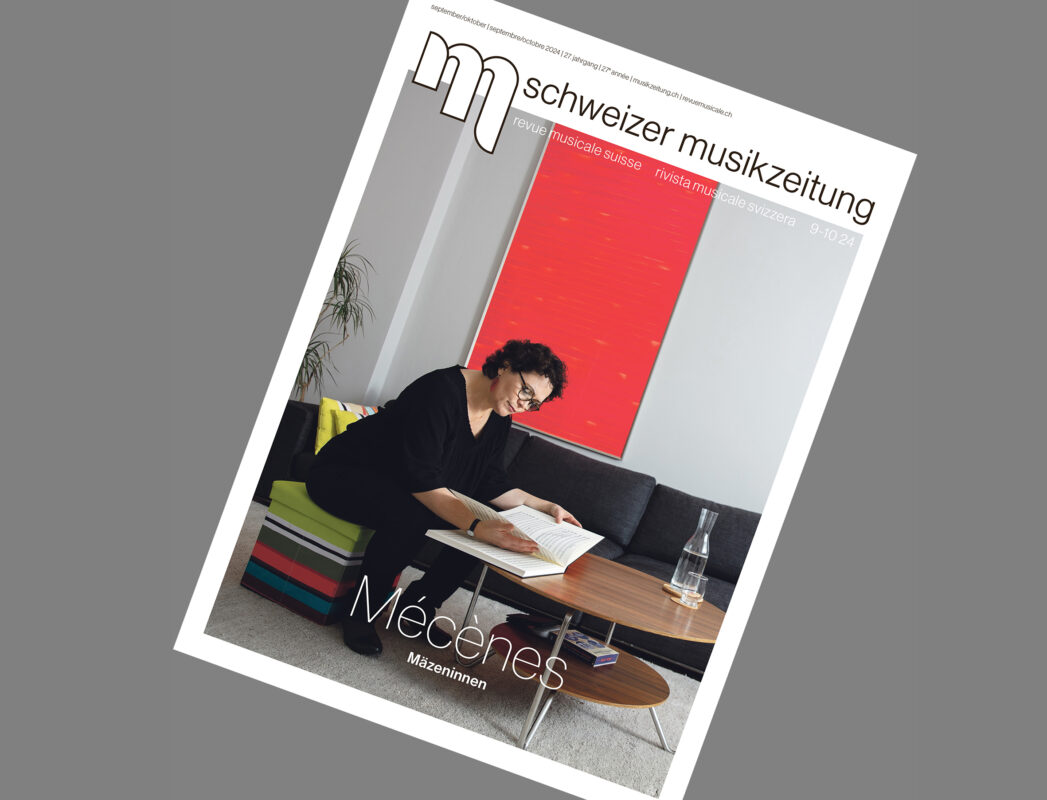Silence at the piano
The pianist and composer Laura Konjetzky sits at the piano without playing. Questions and associations develop into a play of ideas about the character, message and limits of musical silence.
The pianist and composer Laura Konjetzky sits at the piano without playing. Questions and associations develop into a play of ideas about the character, message and limits of musical silence.
A concert grand piano. It is on stage for the upcoming solo recital. I, the pianist of the evening, step up, walk to the instrument, sit down, place my hands on the keys without pressing them down and play a work that consists of silence.
I imagine this scenario as I sit at the piano in my study and ask myself the question: What does silence mean at the piano?
Silence is an extreme form of musical expression. What is decisive in silence is what precedes it and what comes after it, like a pause, in an enlarged form. But what if the framework of silence lies outside the composition, because the whole piece consists only of silence?
Is such a work an expression of musical speechlessness? Does it lead the listener to their own inner sounds? Does such a composition purify the ears? Does it uncover a deeper musical layer?
I'll start with the instrumentation. If, as a composer, I opt for silence on the piano, then this instrument plays a central role without a single note being played. Silence can direct the audience's focus to the visual appearance of the grand piano. Silence can stimulate the memory of the sound of the piano, can awaken a longing for piano music. Silence at the piano can be like music.
The performance instructions are essential for the message of such a composition. If they specify that the pianist should place his hands on the keys without pressing a key, a different silence is created than if the pianist is sitting in front of his instrument with his hands folded in his lap. It is important whether the pianist has his gaze directed towards the piano or lowered, whether he is looking outwards or inwards.
The position of the hands on the keys plays an important role. If the pianist places the left hand in an extremely low bass position and the right hand in an extremely high treble position, the appearance of the silence will be different than if the pianist places the hands around the C of the key.
The desired basic message of the composition is central to these decisions: is it about the non-resounding of a piano piece in which the hand positions show what is not sounding? Is it about a silence that blocks the pianist and prevents him from playing? Is it about showing that there is no silence after all, but that every little rustle is also part of the music, or is it about reaching a kind of meditative silence that can be a door to inner auditory impressions? Since the acoustic identity of the instrument is lost in the composition of silence, the visuals play an even greater role. There is a shift in emphasis.
The structure that the composer has chosen for the silence is also interesting. The composed silence can, for example, consist of a single pause. The composed silence can be made up of lots of small rests. If the pause values become smaller and smaller over the course of the piece, is this an accelerando of silence?
From a compositional point of view, the beginning of the piece points the way. If I, as the composer, clearly show the listener when the silent work begins, the effect is different than if I let the listener gradually discover that the piece has already begun. As a rule, the grand piano is already silent on the stage during the entrance. Is this already the performance of a composition of silence without a pianist? Is there even a need for an interpreter for such a work?
The beginning and end of the silence form a necessary framework that defines the silence and shapes its identity. The pianist plays a central role in this. Silence overrides the expectation that something will sound on the instrument. The pianist is also needed for this. The pianist's performance and the beginning of the defined silence create a concentrated silence, a guided silence. Since silence is always in relation to something, the dynamic range of the grand piano is also an important reference. The grand piano is a large, powerful instrument and the silence on the piano is oriented towards it. Silence at the piano can take away what the pianist is most familiar with on stage: playing the piano. Silence at the piano requires new skills from the pianist that have their origins in choreography or the performing arts.
Silence as a musical manifestation is not a marginal phenomenon, but an elementary component of music. Dealing with this topic leads composers, performers and listeners directly to fundamental musical, compositional, interpretational and philosophical questions.
I can only recommend the mental journey to silence on a selected instrument. Silence acts like a magnifying glass and immediately brings the central themes of the respective instrument into play.
I have been sitting quietly in front of my grand piano in my study for quite a while now. After this journey of thought, I feel a great need to make the instrument sound. I am curious to hear how I perceive its sound now.








